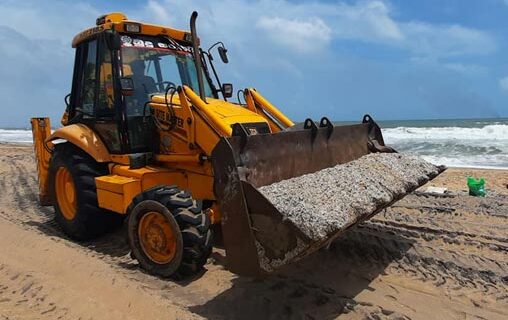Pressure grows to reclassify plastic pellets as hazardous substances

Pressure is growing on International Maritime Organization (IMO) member states to to classify plastic pellets as hazardous substances.
Just weeks after the French government promised legal action in response to a mass of plastic pellets washing up on its beaches, another spill has impacted beachgoers in Dubai.
On Sunday, thousands of plastic pellets – or nurdles – washed up on Sunset Beach, Dubai, with the public quickly gathering to support the clean-up efforts. The pellets were mostly contained in bags, and are said to have fallen from a containership at sea – the exact source is currently unknown.
In the wake of the X-Press Pearl sinking in May 2021 and up to 70bn of plastic pellets washing up on Sri Lanka’s western shoreline, Colombo has been lobbying the IMO to change the rules regarding plastic pellets.
There are many other examples of this hard-to-clean-up substance spilling from ships such as the box spill from the MSC Zoe four years ago which saw a pair of Dutch islands become littered with plastic.
At the upcoming IMO Pollution Prevention Response Sub-Committee (PPR) meeting in April, IMO members will continue discussions around plastic pellet classification and regulation. These discussions will result in a recommendation being sent to the Marine Environmental Protection Committee meeting (MEPC80) – being held in July.
Falco Martin, programme officer, marine plastics at the NGO Fauna & Flora, commented: “Plastic pellet pollution from ships is a serious, yet severely under-reported issue. Billions of pellets are estimated to be entering the ocean every year, either from large-scale shipping disasters or more chronically, where damage occurs to the packaging used to contain pellets during handling and transport. But, the reality is, this form of pollution is entirely preventable.”

The great nurdle hunt is an ongoing worldwide effort